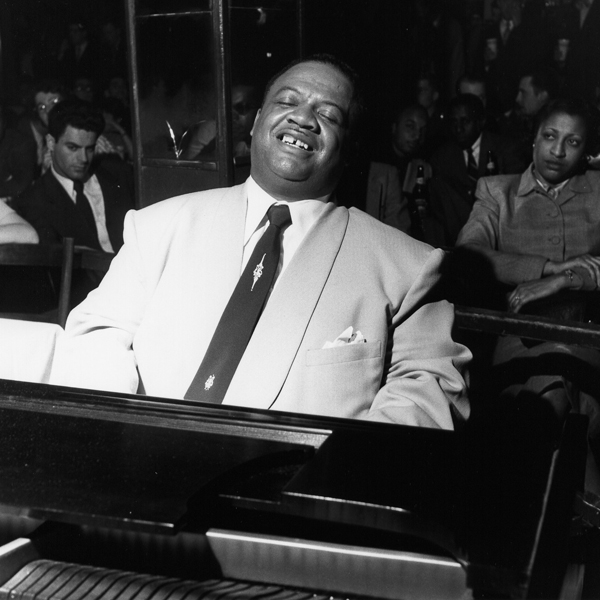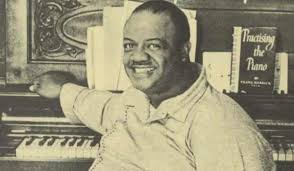Meade Lux Lewis – A Complete Biography
Introduction
Anderson Meade “Lux” Lewis, commonly known as Meade Lux Lewis, was one of the defining piano voices of American boogie-woogie. A powerful and percussive pianist, he helped popularize the boogie-woogie style during the 1930s and became widely known for his signature composition, “Honky Tonk Train Blues.” Though his career had ups and downs, Lewis’s recordings and his appearances alongside fellow pianists Albert Ammons and Pete Johnson left a lasting imprint on jazz, blues, and early rhythm-and-blues piano traditions.

Childhood
Meade Lux Lewis was born in 1905; most authoritative accounts list his birth date as September 4, 1905, and give Chicago, Illinois, as his usual birthplace, though some older records also suggest Louisville, Kentucky. He was the son of George and Hattie Lewis, who were Kentucky natives. Music was present in his family: his father played guitar and arranged for Meade to take formal violin lessons when he was young. The nickname “Lux” (short for Luxembourg, originally a comic-strip inspired joke among friends) was attached to him in childhood and remained his professional name.
Youth
After giving up the violin in his mid-teens, shortly after his father’s death, Lewis turned his focus to the piano and began playing in Chicago’s lively music scene. Chicago in the 1910s and 1920s was a hotbed of blues, jazz, and piano innovation. Lewis absorbed influences from older pianists such as Jimmy Yancey and Pine Top Smith. He became close friends with Albert Ammons during these formative years; they practiced together and shared musical ideas that would later fuel the boogie-woogie revival. By the late 1920s Lewis was performing in clubs and making his first recordings.
Adulthood and Career
Lewis made his earliest known recording of “Honky Tonk Train Blues” for Paramount in 1927. For years he played in Chicago nightclubs and on the radio, but his national profile surged after he was brought to New York for John Hammond’s landmark From Spirituals to Swing concert at Carnegie Hall in 1938. That appearance — alongside Albert Ammons and Pete Johnson — introduced boogie-woogie to a much broader audience and sparked a multi-year craze for the style. After Carnegie Hall the trio toured, held extended engagements at Café Society, and inspired other musicians and arrangers to incorporate boogie-woogie textures into swing and big-band settings.
Lewis recorded for a variety of labels across his career, including Paramount, Parlophone, Victor, and Blue Note. He also appeared in films and continued to perform and record intermittently through the 1940s into the 1960s.
Major Compositions and Musical Style
Lewis’s most famous piece is undeniably “Honky Tonk Train Blues,” a driving, locomotive-like boogie that became a standard of the form and was reissued or re-recorded several times. His style combined a thunderous left hand — an ostinato bass pattern characteristic of boogie-woogie — with improvisatory right-hand riffs and bluesy fills. Although some described his technique as less chromatically inventive than his peers, his sense of rhythm, dynamic power, and ability to convey the physical momentum of train travel in music made his recordings instantly memorable. Beyond “Honky Tonk Train Blues,” Lewis recorded numerous solo piano numbers, occasional ensemble tracks, and even experimented with unusual keyboard timbres such as celeste and harpsichord in some sessions.
Death
Meade Lux Lewis died on June 7, 1964, in Minneapolis, Minnesota. He was visiting the area, where he had family connections, at the time of his death. His passing marked the end of the life of a pianist who had been central to one of American music’s most energetic revivals.
Conclusion
Meade Lux Lewis’s influence rests less on virtuosic harmonic novelties than on character, momentum, and timing. His playing embodied the rhythmic propulsion at the heart of boogie-woogie. Although the popular boogie-woogie craze faded after the 1940s, Lewis’s recordings — particularly “Honky Tonk Train Blues” — continued to inspire pianists and be rediscovered by future generations. Along with Albert Ammons and Pete Johnson, he stands as a key architect of a piano tradition that bridged rural blues, urban jazz, and the nascent sounds that would help shape rhythm-and-blues and rock-and-roll. His recordings remain reference points for students of piano blues and for anyone interested in the history of American popular music.

Comments are closed